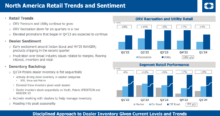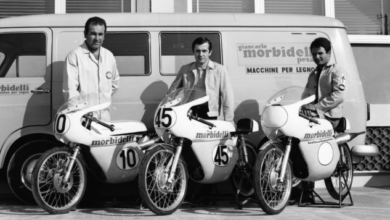1. Number of leads.
A dealer should make sure that all Web, phone, walk-in and show leads are accounted for in a lead management system, says Bob McCann of ARI. “All leads must be entered in one database to make sure that no inquiry falls through the cracks,” he added. “If you are forwarding any leads to salespeople directly by email, chances are that many of these potential sales opportunities will not be added to your database and properly nurtured in the long run.”
2. First service retention.
“Do you even know how many of the bikes, etc., you sell come back to you for their first service? You have gone through all the motions to get and sell to your customer, and if you are not absolutely confident they are returning to you for the first service, you are failing to perform,” said Dave Waugh of Systematyx. “Consider a prepaid maintenance program to ensure your customers stay with you.”
3. Profitability.
“Our belief from over 40 years in the powersports industry, the absolute minimum a powersports dealer should be keeping is 3-4 percent [net profit],” John Spader of Spader Business Management said at Profit Xcelerator.
4. Inventory cycle counts.
Cycle counting of inventory should be constantly monitored, Steve Jones of Gart Sutton & Associates said at ProfitX. “The target we have is 15 minutes per day, one bin per day,” he said. Jones recommends that a parts manager should randomly pick one bin per day to be counted to reduce shrinkage. “The goal is to get through the inventory six to eight times per year,” he added.
5. Response time.
“Respond to leads within minutes,” McCann advised. “Faster response times have always been the differentiator between poor and strong closing ratios. Measure the time between when the lead arrives and when the assigned salesperson sends a personal email or makes a phone call. In addition, track the time it takes to assign the lead. Separating these two indicators will help you determine who needs coaching on shortening the overall response time.”
6. Warranty department competence.
“Monitor this department for competence, and you will see admin, parts and service at a glance,” Waugh said. A dealer should know the store’s claim value per unit sold and how the warranty claims rank against surrounding dealers because the OEMs know those statistics.
7. Debt-to-equity.
What a dealership owes divided by what a dealership owns equals the debt to equity ratio. A good ratio is four or five to one, Spader says.
8. Slow movers and non-movers.
A slow moving product is one that hasn’t turned in at least six months, Jones explained. Those items should be targeted for quick movement, possibly at a discount. Non-movers are those products that haven’t moved for 12 months and have become obsolete. “Obsolete parts, accessories and clothing don’t go up in value,” Jones said. Obsolete items need to be discounted, donated or thrown away, he added.
9. Closing ratios.
“Measure your appointment closing ratio – number of units sold from actual appointments – and your overall closing ratio – number of units sold from all leads,” McCann said. “The closing ratio report should feature results by salesperson and by lead source. With that information in hand, you can improve your overall sales performance by assigning leads to the best closers, providing additional training as needed to others and focusing your efforts on the best sources of leads.”
10. Phone on-hold times.
“What does one minute on-hold feel like? Have your staff sit absolutely still and quiet for just one minute as an exercise and see how it feels. They won’t survive the several minutes they leave your customer on-hold,” Waugh said. “What does your on-hold message say, if anything? You have them captive; why would you waste this precious opportunity?”








